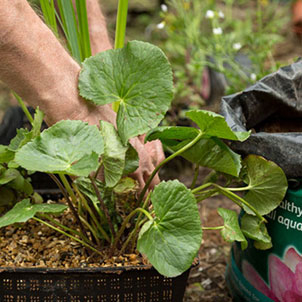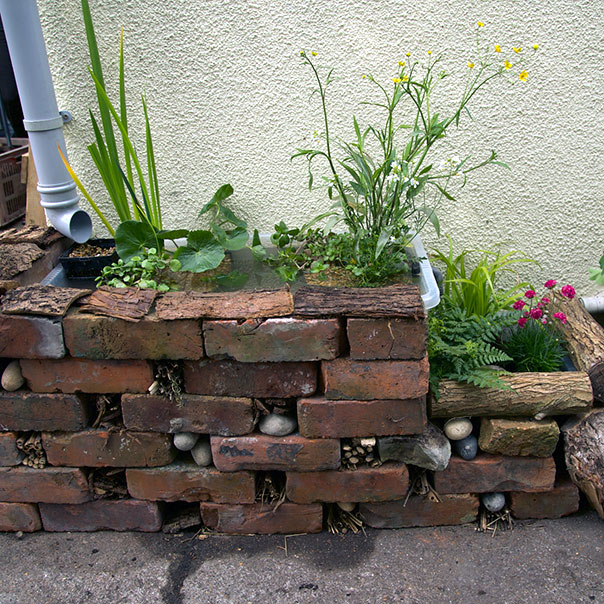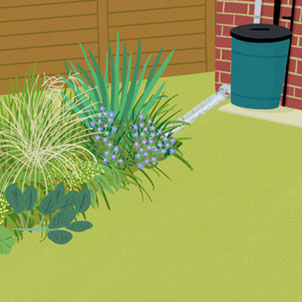How to make a mini wildlife pond from an upcycled container
Creating a mini-pond can still have surprisingly high benefits for wildlife.
Research shows that just looking at water, a plant, or a tree can improve our health and wellbeing. And many of us have fond childhood memories of dipping in ponds as children. But putting in a large pond can seem daunting if you’re looking after kids, or impossible if you don’t have much outside space.
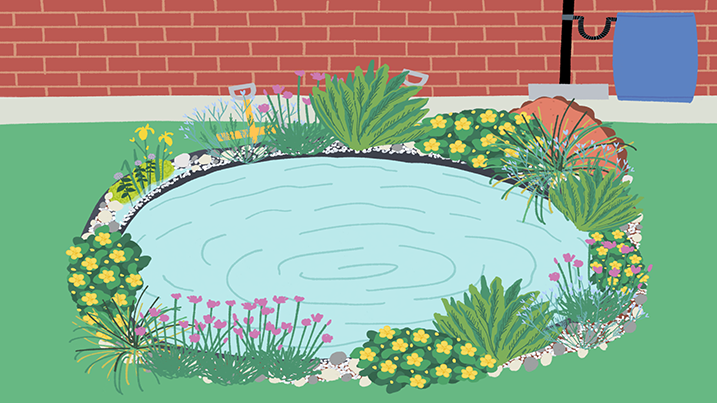
Big ideas for little spaces
One of the best ways you can attract wildlife to your home, even if you only have a balcony, is to create a mini pond from a container. No matter how small, a pond will attract wildlife if it’s in good condition.
What you’ll need
- An old container - a washing up bowl, an old kitchen sink, a garden trug or a large plant pot will all do
- Small stones or gravel
- Pebbles, rocks or twigs (to act as stepping stones)
- If you use something with a hole in the bottom, or made of wood, you will need a watertight way to fill it
A step by step guide
1. Find the right space
Choose somewhere that gets some sun but isn’t in full sunlight all day. Place the container in your chosen spot before you fill it with water (it will be too heavy to move when it’s full). You can leave it on the surface, or dig it in if you can (this helps creatures get in and out).
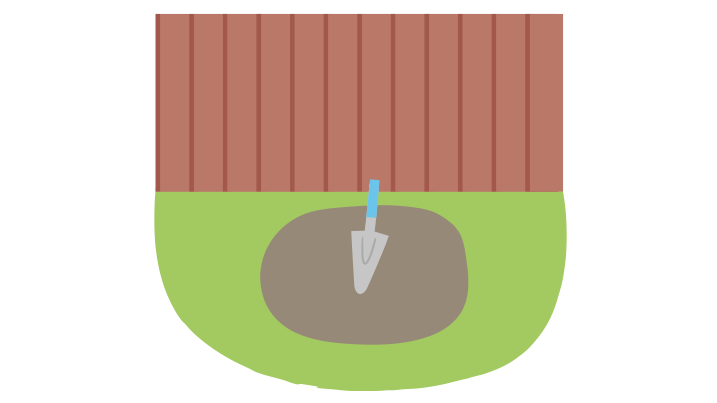
2. Prepare your container
Put some gravel in the bottom. Try not to mix soil with it, as the nutrients in the soil will encourage the growth of algae. However you’ve positioned your pond, make sure wildlife can get in and out by create little stepping stones, or ladders with stones, wood, tiles, sticks etc.
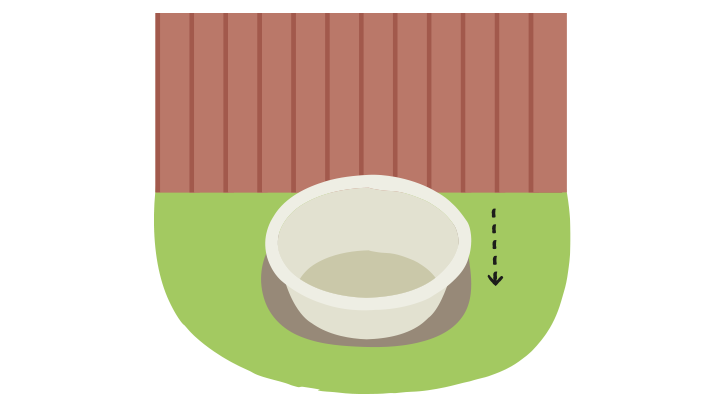
3. Fill your pond
Use rainwater where you can. Either from a water butt or a watering can that’s collected rain water. If you do need to use tap water fill your container and then leave the water for 24 hours to let any chlorine evaporate.
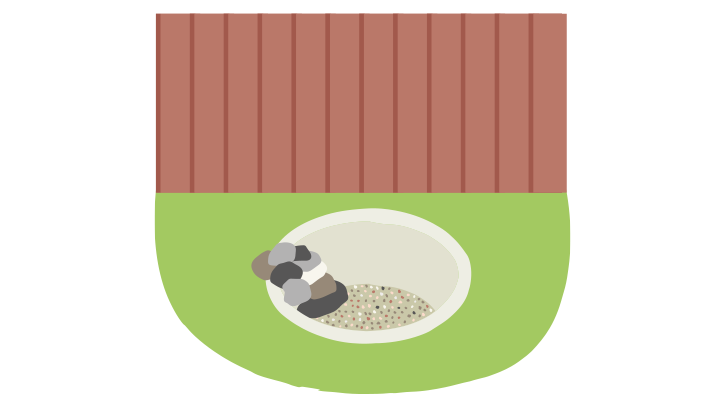
4. Add some plants
Make sure you use aquatic plants if you can (you only need a couple). Submerged pondweed is important to include because it helps keep the pond clear. And make sure you’re always using native plants. Rigid hornwort and whorled water-milfoil are good choices. You can buy them online from garden centres and specialist pond suppliers.
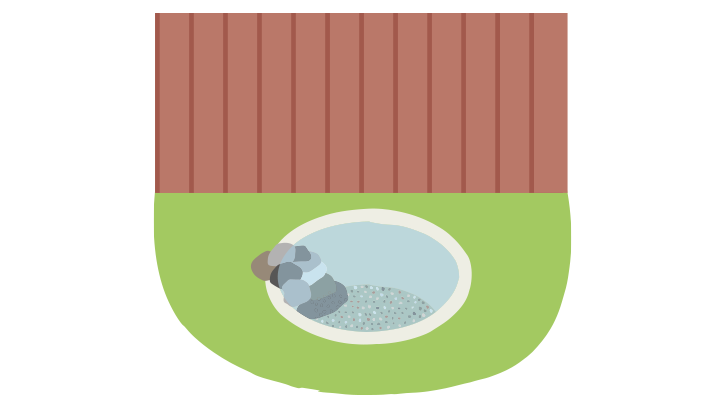
Great plants for small ponds include:
- Miniature waterlily (Nymphaea "Pygmaea Helvola")
- Lesser spearwort (Ranunculus flammula)
- Starwort (Callitriche stagnalis)
- Flowering rush (Butomus umbellatus)
More help and advice on choosing pond plants
5. Watch and wait
Over the next few months this little oasis you’ve created will develop an ecosystem of its own. As part of this process it might develop algae or blanket weed to start with but as the ecosystem develops the plants and creatures will keep the pond clear. Don’t be tempted to introduce tadpoles, frogs, fish or even water from another pond as it can spread disease. Let nature do its job and you could attract hedgehogs, frogs and toads, bats, birds, dragonflies and damselflies to your pond.
Other things you can do
- Create a frog and toad abode next to your pond. This gives your wildlife visitors somewhere to shelter, either from the sun or from potential predators.
- Learn more about UK amphibian species
- Grow insect friendly flowers in a hanging basket or a pot. Choose pollen rich varieties to attract bees and butterflies. Look for mixed seed packs of bee or butterfly friendly flowers online.
- Choose a shady spot and build a bug or wildlife hotel from old bits of wood, hedge cuttings, old bits of brick, pine cones, moss, straw, bamboo canes… anything that you might have lying around that you think wildlife might enjoy making a home in.
